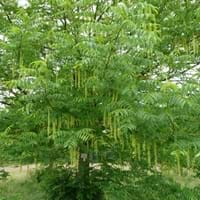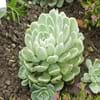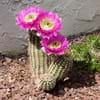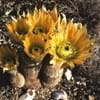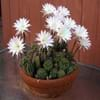Life Span
Perennial
Perennial
Type
Cactus or Succulent
Tree
Origin
Central America
Asia
Types
Echeveria halbingeri, Echeveria elegans
Not available
Habitat
Dry areas, Rocky areas, Semi arid regions, Semi desert
Boggy areas, Mixed deciduous forest
USDA Hardiness Zone
8-11
6-9
AHS Heat Zone
12 - 10
9-1
Sunset Zone
8,9,12,24
4, 5, 6, 7, 8, 9, 10, 11, 12, 13, 14, 15, 16, 17, 18, 19, 20, 21, 22, 23, 24
Habit
Rosette/Stemless
Oval or Rounded
Flower Color
Light Pink, Light Yellow, Orange
Yellow green
Flower Color Modifier
Bicolor
Bicolor
Fruit Color
Non Fruiting Plant
Green, Brown
Leaf Color in Spring
Green, Yellow green
Green
Leaf Color in Summer
Light Green
Green
Leaf Color in Fall
Pink
Green, Yellow green
Leaf Color in Winter
Light Green, Light Pink, Lime Green, Yellow green
Not Available
Leaf Shape
Succulent
Pinnate
Plant Season
All year
Spring, Summer, Fall
Sunlight
Full Sun, Partial Sun
Full Sun
Type of Soil
Dry, Sandy, Well drained
Clay, Loam, Sand
The pH of Soil
Slightly Acidic
Acidic, Neutral, Alkaline
Soil Drainage
Well drained
Well drained
Bloom Time
All year
Spring, Late Spring
Tolerances
Drought, Dry soil, Heat Tolerance
Drought, Soil Compaction
Where to Plant?
Container, Ground, Pot
Ground
How to Plant?
Leaf Cutting, Seedlings
Divison, Stem Cutting
Plant Maintenance
Medium
Medium
Watering Requirements
Do Not over Water, Keep ground moist, Never Over-water, Over-watering can cause leaf problems or root diseases, Requires regular watering
Needs less watering
In Summer
Lots of watering
Lots of watering
In Spring
Moderate
Moderate
In Winter
Average Water
Average Water
Soil pH
Neutral, Slightly Acidic
Acidic, Neutral, Alkaline
Soil Type
Sandy, Well drained
Clay, Loam, Sand
Soil Drainage Capacity
Sandy, Well drained
Well drained
Sun Exposure
Full Sun, Partial Sun
Full Sun
Pruning
Remove dead or diseased plant parts
Remove all suckers, Remove damaged leaves, Remove dead branches, Remove dead leaves
Fertilizers
All-Purpose Liquid Fertilizer, fertilize in growing season, Water soluble fertilizers
All-Purpose Liquid Fertilizer, Nitrogen, Phosphorous
Pests and Diseases
Insects, Mealybugs, Red blotch, Red spider mite, Scale, Slugs, Snails
No serious insect or disease problems
Plant Tolerance
Drought, Dry soil, Heat Tolerance
Drought, Soil Compaction
Flower Petal Number
Single, Semi-Double
Single
Foliage Texture
Medium
Medium
Foliage Sheen
Glossy
Glossy
Attracts
Insects, Mealybugs
Birds, Butterflies, Hummingbirds, Not Available
Allergy
Toxic
Not Available
Aesthetic Uses
Beautification, Landscape Designing, Showy Purposes
Not Used For Aesthetic Purpose
Beauty Benefits
Good for skin and hair
Not Available
Environmental Uses
Air purification, Indoor Air Purification, Versatility
Not Available
Medicinal Uses
No Medicinal Use
Diaphoretic
Part of Plant Used
Flowers, Leaves
Bark, Fruits, Seeds
Other Uses
Cosmetics, Decoration Purposes, Showy Purposes, Used as Ornamental plant
Not Available
Used As Indoor Plant
Yes
No
Used As Outdoor Plant
Yes
Yes
Garden Design
Houseplant, Rock Garden, Showy Tree
Feature Plant, Shade Trees
Botanical Name
ECHEVERIA
Pterocarya fraxinifolia
Common Name
Oliverella Rose, Urbinia Rose
Caucasian wingnut, Caucasian walnut
In Hindi
Echeveria
wingnut
In German
Echeveria
wingnut
In French
Echeveria
wingnut
In Spanish
Echeveria
wingnut
In Greek
Echeveria
wingnut
In Portuguese
Echeveria
wingnut
In Polish
Echeveria
Wingnut
Phylum
Magnoliophyta
Magnoliophyta
Class
Magnoliopsida
Magnoliopsida
Order
Saxifragales
Fagales
Family
Crassulaceae
Juglandaceae
Genus
Echeveria
Pterocarya
Clade
Angiosperms, Core eudicots, Eudicots
Angiosperms, Eudicots, Rosids
Subfamily
Sedoideae
Juglandoideae
Number of Species
Not Available
Importance of Echeveria and Wingnut
Want to have the most appropriate plant for your garden? You might want to know the importance of Echeveria and Wingnut. Basically, these two plants vary in many aspects. Compare Echeveria and Wingnut as they differ in many characteristics such as their life, care, benefits, facts, etc. Every gardener must at least have the slightest clue about the plants he wants to plant in his garden. Compare their benefits, which differ in many ways like facts and uses. The medicinal use of Echeveria is No Medicinal Use whereas of Wingnut is Diaphoretic. Echeveria has beauty benefits as follows: Good for skin and hair while Wingnut has beauty benefits as follows: Good for skin and hair.
Compare Facts of Echeveria vs Wingnut
How to choose the best garden plant for your garden depending upon its facts? Here garden plant comparison will help you to solve this query. Compare the facts of Echeveria vs Wingnut and know which one to choose. As garden plants have benefits and other uses, allergy is also a major drawback of plants for some people. Allergic reactions of Echeveria are Toxic whereas of Wingnut have Not Available respectively. Having a fruit bearing plant in your garden can be a plus point of your garden. Echeveria has no showy fruits and Wingnut has showy fruits. Also Echeveria is flowering and Wingnut is not flowering . You can compare Echeveria and Wingnut facts and facts of other plants too.

